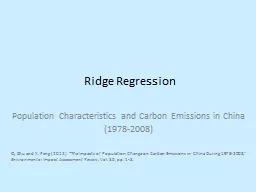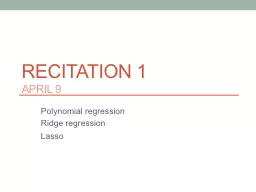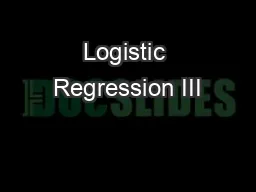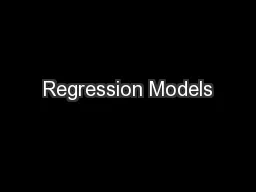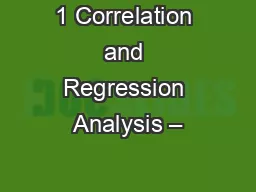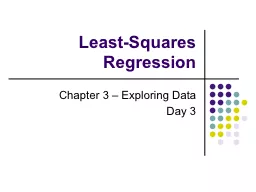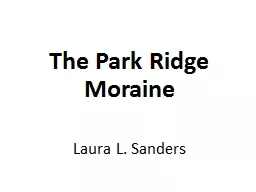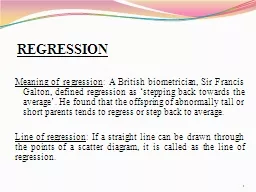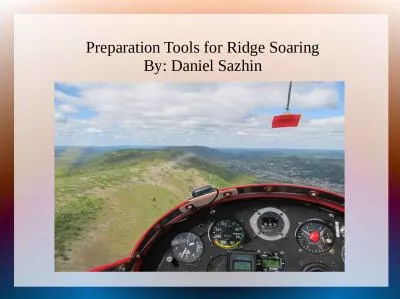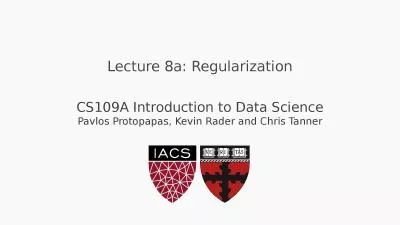PPT-Ridge Regression
Author : pasty-toler | Published Date : 2016-07-05
Population Characteristics and Carbon Emissions in China 19782008 Q Zhu and X Peng 2012 The Impacts of Population Change on Carbon Emissions in China During 19782008
Presentation Embed Code
Download Presentation
Download Presentation The PPT/PDF document "Ridge Regression" is the property of its rightful owner. Permission is granted to download and print the materials on this website for personal, non-commercial use only, and to display it on your personal computer provided you do not modify the materials and that you retain all copyright notices contained in the materials. By downloading content from our website, you accept the terms of this agreement.
Ridge Regression: Transcript
Download Rules Of Document
"Ridge Regression"The content belongs to its owner. You may download and print it for personal use, without modification, and keep all copyright notices. By downloading, you agree to these terms.
Related Documents

